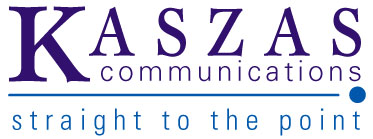Shades of Great: How Can Investment Professionals Align Their Careers With Great Firms?
Author: George
Job Change Advice: If you find yourself in a hole…stop digging!
It’s easy to dig ourselves into a hole that feels impossible to get out of. For example, it’s easy to fall into a job with no intention of staying there only to realize, years later, you’re stuck there…it’s draining you body and soul, but you need the money just to survive or maintain a lifestyle expected of you by family and friends.
Our tendency is to look for a compromise, to find a way to keep the money but find a way to make life better. The solution for many of my clients has been to do more of what they think they want to do– paint, write, sing, perhaps, or start a business–a reaction to their job dissatisfaction or problems.
Sometimes, these options make the situation worse! Starting something new takes energy, something that is in short supply when they get home from work. Sometimes, their marriage or partnership breaks down; or, they go into debt or bankruptcy; or, they try to figure it all out on their own but they lack clarity, confidence, and resources. They slip into depression. In short, they reach a desperate place. They see no way out of their hole…trapped!
It might feel like a death trap but it is not a life-and-death situation. They are not homeless or hungry. There are personal and professional supports available—this becomes the time to draw on them. One of the most important resources to draw on is the creative spirit than resides in each of us. We may not be musical, or artistic in any manner, but we all have the power to create our future. Creating is a process and anybody can do it.
Changing your focus is the key to a midlife career change
The biggest obstacle to creating a new career or business or future is our inclination to compromise. We focus on the wrong things, on what we think we can do for money, instead of what we want to do. In my experience as a job change expert for the past 20 years, what I see is a lack of vision based on one’s deepest values and highest aspirations.
In the creative process, it is important to love the creation before it exists—to love the dream home before it is built, to love the song before it is written, to love the child before it is born. The same principle is to get a vision for a career or job and love it before you find it our create it. An entrepreneur loves the business before it is built. A chef loves the dish before it is made. A filmmaker loves the film before it is produced.
In terms of work, too many of us have lost touch with what it is we love to create. How do we know? By comparison. When it is not there, you feel like you’re going through the motions, disengaged, uninvolved, disconnected—in short, you don’t really care, it’s just a paycheck. This is not necessarily a bad thing, but it can become a problem after many years, especially if it drains your energy, and plants you in a hole.
Love the result, not the process
One of the best ways to get out of a job hole, or career trap, is to push aside compromise thinking and focus on what it is you would love to create—the result. This does not mean you will love the process; you may even hate taking the necessary steps.
It is not a compromise to do the hard work, learn what you need to learn, develop the skills you may need but don’t have yet. Easy or difficult, fun or a pain, throughout the good, the bad, and the ugly, that experience of connection, involvement, of being true to yourself and true to your creation will permeate everything you are doing. Sounds a little like parenting, doesn’t it?
Love brings out the best in us for parenting and career change. One thing I know for sure is that your chances of making a successful career change will disappear quickly if you forget or lose touch with your desire to see the end result, no matter what circumstances you are in. Being a creator is about keeping your eye on the main prize.
Labour Day in the 21st Century: What’s the deal now?
As a job change expert, I work on the front lines of our laissez-faire system of supply and demand in the job market. The corrosive effects of this system force some people to change careers when they lose their jobs or when they choose to look for a new job in order to advance their career or transition out of a bad situation into a better jobfit.
As individuals, we must learn to resolve the ongoing tension between periods of stability and necessary change. Normally, I provide practical and realistic advice on how to do so. But today is Labour Day, so I’ll take a step back and look at the bigger picture. Social systems change too, so what is the meaning of Labour Day in Canada for our new global economy?
I think it’s important to put Labour Day in its historical context. It has been celebrated in Canada during the first weekend of September since 1894. However, it became popular during the 8-hour day movement of the 1930s. The big unions finally got recognized and management said, “OK, you get an eight-hour day, steady work, steadily rising wages—just don’t question any of our shop floor or office practices. We’ll jerk you around for eight hours on the job, but we’ll pay you enough money to buy a house, buy a boat, take it to the lake, buy a refrigerator, buy a washing machine.”
In other words, the salesmen of this New Deal sold the idea of comfort, a condition where our risk is reduced. Salesmen strike with fear to get our attention but close the deal by offering to quell the risks of everyday life. This deal was firmly established by the 1950s, a sweet deal that grew in terms of influence and importance as the economy became dominated by big business, big government, big unions resulting in collective bargaining, high employment, job security—obviously not for everyone all the time.
Downsizing started in the 1970s with a cutback in labor costs enabled by finding cheaper ways to make things overseas, and along with this we had the return of a deregulatory, laissez-faire creed during the Reagan era (“Greed if good!), which culminated in the meltdown of financial markets in 2008. This meltdown was nothing new but rather a re-occurrence of the risks and dangers of laissez-faire capitalism that is always there.
Taking risks is important; it’s a valuable function of the economy. Risk is rewarded and cherished and applauded. What’s different now, it seems to me, is that risk is calculated only on an investment banker’s computer screen, and the consequences of their risk-taking is not carried by the bankers themselves but lands in the laps of ordinary people who see their jobs and/or their benefits disappear.
Today, we seem to have a prevailing ideology that celebrates risks for the multitude while protecting the handful—hence the appearance of the Occupy Wall Street movement that drew attention to the (undeserved?) privileges and (immoral?) practices of the 1% handful. Some economists say we are now in a big financial mess due to unsustainable debt. Unions seem powerless to stop this slide into financial irresponsibility and moral degeneracy. As a result of taxpayer bailouts for the automotive and financial industries, the unions now run the risk of being seen as part of that handful being protected from the consequences of the risk takers.
The deal is falling apart. Employers no longer guarantee eight-hour day, steady work, steadily rising wages. Employees no longer give unquestioning loyalty to their employers. Change is inevitable in any laissez-faire system. We’ve enjoyed a long period of relative stability and prosperity. The new global economy—driven by the emergence of China and other Asian countries as economic engines of growth—may be undermining the high standard of living we enjoy here in Canada, and putting downward pressure on wages and our ability to pay for a safety net of pensions, universal health care, and other cherished social benefits. Will this be the undoing of unions? Instead of helping to clean up the mess—involving new sacrifices and commitments—will they focus on insulating their members from inevitable change and its consequences?
We’re all in this mess together. How do we exercise our collective responsibilities–through unions, parliament, or other democratic means–to organize and manage society in a way that is humane and helpful to all? How do we soften the corrosive effects of laissez-faire capitalism? Unions, of course, will be part of this dialogue in the 21st C. But will they be a key player in solving these vexing questions?
“Oh, what a feeling…what a career change rush!”
Everyone’s heard a story about some successful businessperson who dumped a 20-year career to pursue something completely different and is happier for it.
The famous Impressionist painter, Paul Gauguin, for example, ditched a lucrative banking career and bourgeois life in Paris to paint full-time in the Polynesian islands.
Most people who want to make a midlife career change never take such drastic action because they fear change and don’t want to make sacrifices—at least that’s the common job change advice. I suggest this is incorrect.
I’m sure Gauguin feared change and didn’t want to make sacrifices but did so anyway. What motivated him to do so, and why do so many people who feel stuck in a career, unable to take action to get unstuck?
Like most people, Gauguin got an education that led to a particular career path. His vocation was fixed but some years later he decided he wasn’t a banker anymore. Like others, he probably said to himself, “If I don’t make a move now, I never will, and I’ll live to regret it.” But the truth is Gauguin didn’t know how to make a career change.
A successful transition requires effective actions
Gauguin’s first action was not to jump on a boat and sail to the South Pacific. He didn’t start with an “aha!” experience then go out and try to find it. No, he spent years painting.
He learned to paint, hung out with other artists, and explored the art world, learning not only his craft but the business of art. Transition is a process based on actions. As a job change expert, I know that the motivation underlaying those actions is the key to a successful transition.
Gauguin knew what he wanted to do—paint. But that’s not enough for change. Many people figure out what they want to do but nothing comes of it. Why?
Gauguin remolded his deepest values and highest aspirations. Instead of producing wealth, he decided it was more important for him to produce beauty, his deepest value. In order to produce beauty, he decided to paint full-time, his deepest aspiration.
Changing careers means redefining our working identity—who and what we are in terms of our right work, what we communicate about ourselves to others and, ultimately, how we live our working lives.
Who we are and what we do—our BEING and our DOING–are closely connected, the result of years of certain actions. And to change that connection, we must first resort to other actions that align with our deepest values and highest aspirations. This is the source of motivation for a midlife change.
As a painter, Gauguin didn’t make much money but loved his new life. The feeling—the intrinsic reward, the emotional value–that he gained from painting aligned with his deepest values and highest aspirations, a feeling he couldn’t get from banking.
A picture of a future that feels better
In other words, change occurs when we have a picture of a better alternative to our current identity, one that feels better. My clients who have made successful changes know this feeling well.
That is the purpose of my JobJoy Report — to give you a picture of a new working identity, one that aligns with your BEING. It will help you visualize a specific outcome, something different than the one you are now stuck in.
My JobJoy Report will start you moving in a new direction because you will be motivated to make a change, by DOING new things that feel better.
Once you experience those positive feelings, by taking different actions, you will make a successful career change and live a better story. Oh, what a feeling…what a rush!
Job Change Advice: How to Convert a Conversation into a Job Offer
In other posts, I have explained how to get face-to-face with hiring mangers to increase your chances of getting a job offer sooner…rather than waiting for callbacks to online applications in this hyper-competitive job market.
But…once you get there—what do you say?
The first order of business is to establish rapport, build a positive relationship. How do you do that?
Not by selling yourself; why should they care?
No, by first tapping into their concerns. Get them talking about their needs and priorities.The most effective way to do that is to ask questions…then listen.
Think about it, don’t you appreciate someone taking the time to listen to your problems? Isn’t that the substance of most conversations you enjoy with friends and family?
This is what every successful salesperson learns early in their career when they serving a portfolio of accounts with a relational or solutions-based approach to sales.
There are two kinds of questions to ask during a face-to-face meeting: plus or minus questions. It is usually preferable to start with “safe’ questions on the plus side. Start with their Industry or sector; most managers like to talk about trends and issues in their sector.
Why? Because work—when you think about it—is just activity organized around problems, challenges, issues, or pressures that get in the way of organizational goals and objectives.
If it was easy to achieve those goals, the manager wouldn’t need to hire anybody, they’d do all the work themselves and make more money!
But they can’t, too many problems get in the way of their best laid plans, their most clearly defined goals, their most heartfelt objectives. That manager needs you more than you think!
Remember, your goal in this first meeting is to establish rapport, not get a job offer! This is a necessary step towards getting an offer.
Here are a few conversation starters that give you an idea of the kinds of questions that get a manager talking:
– What is responsible for the positive or innovative trends in the industry? Are they social, political, economic, technological or other kinds of trends?
– What factors are responsible for driving growth in this industry?
As a midlife career changer, the scope and nature of the questions might change depending on who you are talking to and what sector you are talking about. Your own questions might be more focused and refined, appropriate for a specific situation.
Your goal is to get them talking. What you are listening for are clues to change and growth in the sector, two key drivers of job creation and hiring.
Your ultimate purpose during these advice calls is to identify the problems, to see if you want to be the problem-solver!
As rapport develops between you over a conversation, an informational interview, or perhaps 2-3 meetings, you might move to minus questions about the sector in order to identify specific pain points
For example, you might ask, ‘What specific trends affect you? (Markets drying up, hostility toward the industry, cost factors, etc.). But, be careful, because a minus question might imply that the manager is not doing a good jobif you ask a question like, ‘Is your growth fast or slow? Is it typical of the field?’
Managing this kind of approach with a hiring manager requires some skill, even practice. I suggest you try out this approach with somebody who knows you well, someone who is willing to give feedback on the effectiveness of your approach.
Since the stakes are so high, in terms of you getting a job offer, consider working with a job change expert to help you practice your approach. You might need to move deftly from sector questions, to company affairs, then personal priorities of the manager.
Moving back and forth between questions, while being sensitive to individual reactions to your tone and approach, is not rocket science…but it is a skill that must be developed and deployed in an appropriate manner.
How Click Moments lead to Successful Career Changes
New services and products are being created daily. They seem to come out of nowhere and rocket to almost instant popularity, like Pinterest. Ben Silbermann and Evan Sharp met for a beer in 2009 and discovered they both loved collecting. Click.
Talking further they thought, “Why not develop a way to digitally display your collections?” Click. That interest grew into a shared passion to create a service that looked obvious — after it was created. Despite a lack of programming expertise, they managed to pull in others to create one of the web’s fastest growing social networks.
When you honour your passions and interests, things you really enjoy doing and do well, you are more likely to have click moments, enabling you to pivot more than once into new, more successful directions, no matter how unique or unusual your interest.
Looking back, haven’t there been unexpected time in your life where you met someone or heard an idea that positively changed the course of your life? Light bulb goes off…click! That is a click moment.
While we are so willing to accept randomness in falling in love, the unexpected way it happens, we resist believing that unexpected factors can help us define and develop a career. Planning has its place but many successful entrepreneurs have pointed out that the most important goal of a business plan is to show that a team is moving in some coordinated fashion toward a goal but the plan itself will be outdated within the month.
Same thing with careers. We plan but it is often serendipitous moments that send us down a particular path. On the one hand we want control over events that determine our careers, but on the other we are steered in certain directions when unexpected things happen.
In my JobJoy For Life home study program, I help my clients prepare and plan for such click moments. We create a Vision chart that structures creative tension between our current reality and what we really want for our careers and lives. Then we plan certain actions that will move us closer to our goal.
What is always amazing to me is how serendipity shows up between those planned actions. It’s almost like the universe has its own plans for each of us. It’s important is to recognize those click moments and nurture them into real opportunities. This makes life more of an adventure than a grind.
Consequently staying open to serendipitous events increases the chances you’ll meet the right people and learn the apt information, to stay relevant and, better yet, keep opening adventuresome chapters to the life you are truly meant to live with others. My JobJoy For Life program helps my clients turn click moments into successful career changes.
Like Silbermann and Sharp, who continued with their regular jobs, they took actions that moved them towards their vision for Pinterest, a vision now realized, a new career for each!
This is not magic. It is a process of creativity and available to anyone. We can all create what really matters to us and new opportunities to change jobs, earn more, and live a better story!
You May Not Be Crazy for Changing Jobs
When I first spoke to Maria Ford she was the marketing communications manager for a semi-conductor start-up company, and a confused and distressed woman.
She was working at “yet another high-tech start-up,” her third company in four years. “It’s turning out to be another bad experience,” Maria lamented. She’d just walked out of “a very stressful meeting,” returned to her desk, opened up the phone book and looked under career counselor listings. She found me.
Sitting in my office, Maria opined that she had no support system at work. Her job was “getting engineers to relate a good story,” the only person in the company with that responsibility. “It seems like the engineers and a communicator, like myself, are two disparate species,” she said. “I feel like I am the “crazy one” on a daily basis.”
Maria had been doing a comparable job for similar companies for five years and thought the problem must be her. No matter what company she joined, she always had the same experience. In Maria’s words, “It’s not unlike the movie Groundhog Day. I wake up every morning and it’s the same struggle, day after day.”
To make matters worse, many of her friends were envious of her success. For her, the rub lies in the fact that, “I am really good at my job. Everyone loves my work, I’m making great money, I have a nice house and I’m highly employable. I look successful,” she added.
“My friends think I’m the poster child for English majors. I’m being rewarded for the job I’m doing, so it must be the right work. However, if this is success, I’m going to die very young.”
My work with Maria was very simple. Sitting across from me was a very talented, creative young lady, an excellent writer with a Bachelors and Masters degree in English Literature, trapped in a job misfit.
I pointed Maria to her authentic self. She was not being true to herself, the writer. She was listening to her social self – parents, teachers, peers and society – authorities in general. Here was a woman working with engineers who could not recognize or reward her for her natural writing talent.
Engineers represent logic, left-brain thinking and rationality. They typically don’t appreciate creativity and right-brain thinking. A semi-conductor company is comprised of people who spend their days thinking about circuits, ones and zeros. Maria spends her spare time writing poetry.
If you talk to Maria now, she admits she had no vocabulary for what was wrong. “I now realize that they weren’t bad people. The job was merely a bad fit for me. I’m a creative person and a communicator and I was working for and with engineers who communicate with math.”
In order to be true to herself, she had to find a work setting where her talents were recognized, appreciated and valued. At the time, she didn’t have the self-awareness to understand that her creativity was unique, but once she was able to, she created a life that focused on it.
Within eight months of her first visit to my office, she started her own company in Ottawa called Kaszas Communications Inc.. She utilizes her special abilities to communicate the differences and values a business offers to its’ target audiences.
The ironic part of Maria’s story is that eighty percent of her client base is still high-tech start-ups. Now there’s a big difference. What allows her to enjoy working with those clients anew is that she is able to structure her business in such a way that her services focus on offering what she’s good at and what she loves. She is able to say “no” to elements of jobs that aren’t good for her.
Maria’s job situation wasn’t unique. It’s important to be true to yourself, even when you’re being rewarded for not being true to yourself. Otherwise, you will pay a price – an emotional price. Not being true to oneself is a slippery slope to self-destruction.
A manager “once bitten, twice shy” is careful when interviewing
I’ve helped dozens of individuals this spring prepare for job interviews, including one PhD client who was recently interviewed for a senior position with a national organization in the communications industry. What she encountered in her interview is a typical concern for any hiring manager—risk assessment!
My client is already employed and I told her that a key concern in the interview would be a plausible explanation for why she would leave her current job to take another.
In fact, the manager stated at the beginning of the interview that she was convinced my client could do the job no problem…what she wanted to know was why my client was willing to leave her current job and relocate to Toronto. This became the focus of the interview.
The hidden agenda
The manager told my client that she had fired the last person! Now, this important fact never showed up in the job posting but it was the real “agenda” for this manager’s hiring decision. So, she was being very careful and assessing the risk of hiring my client—she didn’t want to make the same mistake twice.
If somebody is said to be once bitten twice shy, it means that someone who has been hurt or who has had something go wrong will be far more careful the next time.
Finding, hiring and retaining good employees is a big headache for any manager. Most of them are hoping somebody will make the hiring process a lot easier for them so that they can get on with their real task at hand, which is managing.
I have explained how the hiring process works in detail in these previous posts:
https://www.jobjoy.com/job-search-its-not-about-me/
https://www.jobjoy.com/the-linkedin-advantage/
Hiring managers are human beings. They are bundles of self-interest, just like the rest of us, so they tend to look after their self-interest first, which is usually organized around the priorities of protecting and promoting their own careers.
Human nature drives the hiring process
That is why the hiring process is driven by human nature. Human beings hire other human beings. The problem with human beings is that we are not perfect! We all have weaknesses, shortcomings, faults, biases, prejudices, vices, and so on. In short, there is a downside to every individual. Every potential employee is a risk to a manager…a risk that might jeopardize his or her career!
As human beings, we fear what we don’t know. I’m not saying it’s right or equitable or fair; it’s human nature! When you approach potential employers as a stranger, their automatic fear response kicks in because they don’t know you, and they fear what they don’t know. As a candidate in an interview, you are an unknown quantity to the hiring manger.
In other words, a manager will not hire you until they feel SAFE with you. We live in a litigious society, and managers must protect themselves from litigation. One of the easiest ways to do that is to minimize risk. Since you as a job seeker are a risk, the easiest way to minimize that risk is to NOT hire you. In most cases, a manager is not going to jeopardize their career by hiring somebody they don’t feel safe with.
Interviewing is a two-way street
My client understood this because I had prepped her for this kind of scenario, so she handled it well. She explained to the manager how she was managed in her current position, and how she responded to direction and authority, as well as other performance issues. The manager seemed satisfied with that, but my client was not!
Since this manager raised a red flag by admitting to firing the previous employee in that position, my client decided to do some research of her own to find out more about the personality and management style of that manager. What she learned caused her to decline a job offer.
In summary, managers don’t take unnecessary risks with their careers…and neither should candidates. Both parties want and need time to develop rapport with each other to see if there is a good fit.
Both sides should exercise due diligence! If the interview does not produce a level of comfort, then an employer will check references, do background checks, and resort to other methods to ensure a “safe” hire. Candidates should do the same—talk to previous employees, current employees, and so on to determine if the fit is good.
Making a big career change late in life as a single mom
Vera Adamovich was very motivated to make a career change when she showed up at my office. She had that day signed a contract with another career consulting firm, heard of me, and then signed up with my organization too.
At the time she was running a home-based desktop publishing business, the main product of which was a weekly advertising publication.
She wasn’t unhappy with the business because, as a single mom, it had allowed her to be home with her daughters for nine years.
However, when I met Vera, the kids were 11 and 16 respectively and there wasn’t the need for her to be home as much, which caused her situation to be less than satisfying.
Although not miserable, she was always struggling financially because the business didn’t provide sufficient income. Vera hated the responsibility for advertising sales that were necessary to increase the volume of business, but it was difficult to secure good sales people. She’d hire them and they’d last a month.
Though she knew she’d “had it” with desktop publishing, Vera had no idea of what she wanted to do.
Assessment
After reviewing several of her more pleasant assignment experiences, I realized Vera had one very valuable talent. She was able to translate complicated concepts like accounting procedures, computer reports and financial statements in such a way that people could understand and apply them.
In the past she had had jobs where she taught people how to use software, how to interpret management reports and how to process and track orders on an automated system.
Vera’s education wasn’t in high tech but in art, which she used in her desktop publishing business. She loved the creativity involved with designing graphics and derived much satisfaction from a well turned-out final product. What was missing was people contact.
In fact, her work life was structured exactly the opposite way than it should have been. She was spending 80% of her time at home alone working on the computer and 20% of her time interacting with people.
It wasn’t a good job fit and she needed to reverse that equation so that the people portion was 80% of her time and the remainder was spent working at her computer.
She needed to be independent, and not confined to a 9-5 desk job. In other words, she needed a variety of activities and the flexibility to manage her own schedule.
It was actually a question of whether she was going to build a career around her artistic talents or her communication talents. The creative route gave her a real feeling of accomplishment, but she wasn’t able to make enough money from that alone.
Job Choice
Armed with the knowledge of what she needed and what she needed to avoid, Vera was able to find the perfect job in a very short time. She got a position with Laurentian Financial Services as a Certified Financial Planner. However, even though she works with a big company, she has a sense of being self-employed under a structure that is similar to a real estate agent.
“It’s absolutely a people business,” she said. “When it comes to financial planning people have problems that need solving. Dealing with what are often huge problems to my clients, I am able to offer solutions with ease.” Vera enjoys the level of comfort she is able to bring to her clients. She’s happy as the captain of her own ship and totally in charge. She can choose whether to work in her home office or her downtown office.
Most of her time is spent talking to people. When she does have to work on the computer, she says, “It’s a joy! It comes naturally to me, and that’s a creative outlet as well.”
She added that her income is now “great.” It can be whatever she wants it to be. She has everything she needs to get true satisfaction from her career.
Values + Talents = Good Jobfit
Vera made a career decision based on values – that it was important to be home with her daughters. A value-based decision one hears more often is something like, “I’m going to be a millionaire by the time I’m 30.”
It’s not a bad thing to make a decision based on values, but don’t make a decision that excludes your talents. They don’t have to be mutually exclusive. People who make a career decision based only on values may be setting themselves up for a job misfit and years of frustration. Vera’s values were noble. She was trying to do the best for the kids, but her choice didn’t match her natural interests and talents.
She could have done both. Many people get trapped in job situations because they don’t recognize their natural inclinations – what they do naturally and effortlessly – in terms of the right work.
Once Vera had that knowledge, she was able to spot an opportunity that fit her to a “T”. Today, Vera’s business continues to grow through the Independent Planning Group Inc.
Six tips for slipping off the Golden Handcuffs without ruining your career
In the past two years, I have assisted many men & women in their 40s & 50s who got laid-off; some from a job they enjoyed; others who didn’t—but all of them had resisted making a career change until it was forced on them because of the Golden Handcuffs syndrome.
In effect, they felt compelled to stay with their employers because they had an income and lifestyle that offset any job stress or dissatisfaction.
Being let go, for any reason, is a blow to the confidence of anyone. But once they are laid off, almost 60% of them think they don’t need any help with their job search and can figure it out for themselves.
In almost all cases, they are surprised, even shocked, to discover how difficult it is to get another job with a similar compensation package…or find an opportunity that stimulates them.
Before they know it, they are out of work for more than a year, their savings are vanishing, and they soon realize that they need a job ASAP.
But because they had no clear plan or motivation for a job change or career move, the competition for interim jobs-to-get-by-and-pay-bills is not only intense but often goes to individuals with less education and experience because the risk that they will get something better in the short term and move onto another employer is much lower.
We all know people in this situation. When we have good jobs, we often feel powerless to change our situation, so we accept our Golden Handcuffs as necessary…until we too get a pink slip. What is to be done?
If you are in such a situation or know someone who is, here are a few tips to reduce your stress and increase your chances of making a positive change more quickly and easily:
1. Pay Attention. Review your employer’s situation, keep your ear to the ground for any information, even gossip, that might reveal any threat to your job security, e.g. rumors to convert permanent jobs into independent contractors, temps, consultants, or freelancers. If you see any writing on the wall, ready yourself for job change, career change, self-employment, or early retirement
2. Prevent Career Obsolescence. Do whatever you can to keep your skills marketable and your qualifications in mint condition. Whenever possible, invest in transportable skills that you can carry across economic sectors or job situations.
3. Take a Long View. Get a proper career assessment done. Be sure you know the several dozen jobs that you are suited for, based not only on your education & experience (which may have landed you into a Golden Handcuffs role that cannot be replicated elsewhere), but of your talents & motivations, your real value proposition!
4. Reflect on Unsavory Options. Although self-employment is not for everyone, especially for individuals who do not manage financial uncertainty well, thinking about how you could start a business on your own or with partner(s)…it may prove more secure and rewarding than being at someone else’s beck and call.
5. Network Forever. Any business is about relationships. Join professional organizations, community groups, or just lunch more frequently with friends to discuss the changing dynamics of our economy and workplaces. Pay it forward, help out when you can because the contacts that you nurture now can open doors when you unexpectedly need them.
6. Get Professional Help. The digital era is ushering in new job search tools and techniques, and having an effect on how to interview, negotiate, and strategize for better job opportunities. Engage a career professional to update and upgrade your toolbox to optimize your chances of making a successful move if or when the time comes.
Finally, don’t get complacent. Do a few things now to avoid finding out the hard way how Golden Handcuffs can add stress and pain to your life!










